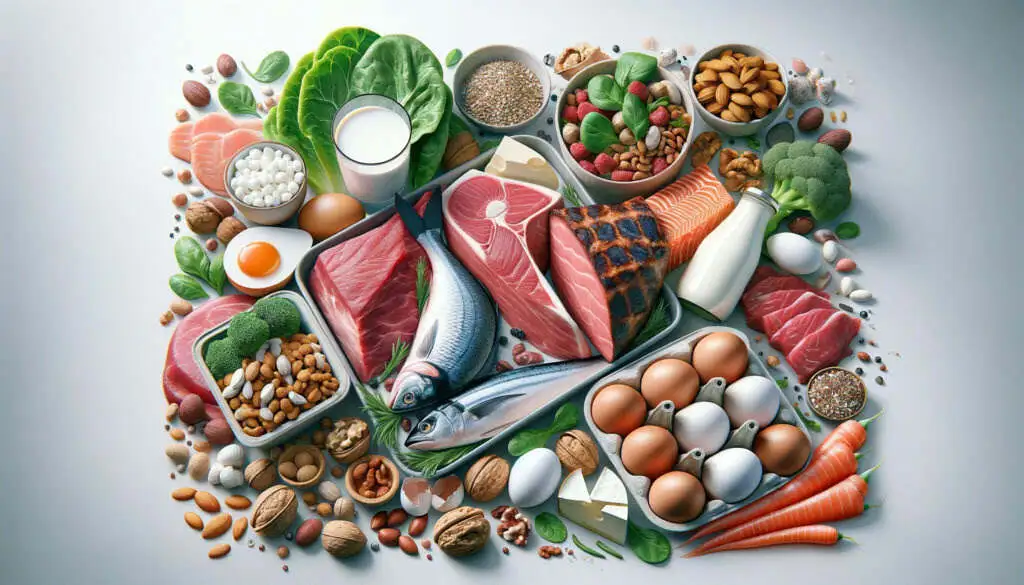As an expert in dietetics and nutrition, I want to share with you key aspects of a no-carb diet. Understanding this diet, its benefits, and potential risks will help you make an informed choice if you are considering it as a way to improve your health and well-being.
| Pros | Cons |
|---|---|
| Effective weight loss. | Nutrient deficiencies due to limited consumption of fruits, vegetables and whole grains. |
| Improved blood sugar control, which may be beneficial for people with type 2 diabetes. | Digestive problems, including constipation due to lack of fiber. |
| Reduces appetite and overall calorie intake due to high protein and fat content. | “Ketoflu” – symptoms of fatigue, headache and irritability at the initial stage. |
| Increased energy and improved concentration due to stable blood sugar levels. | Difficulty following a diet in social situations (such as restaurants or family events). |
| Potentially improves lipid profile and reduces cardiovascular risk. | Health risks with long-term use, including possible heart, kidney, and bone density problems. |
A no-carb diet, as the name suggests, involves minimizing or completely excluding carbohydrates from your diet. This means limiting foods high in carbohydrates, such as bread, pasta, cereals, as well as some fruits and vegetables. Instead, the focus is on proteins, fats, and low-carb vegetables. This approach can promote weight loss and have other potential health benefits, but it is important to approach it wisely and in a balanced manner.
The benefits of a no-carb diet may include improved blood sugar control, weight loss, and enhanced concentration. However, it’s important not to forget the potential risks. Completely excluding carbohydrates can lead to a lack of essential nutrients, disrupted bowel function, and deterioration in overall health. There is also the possibility of fatigue and irritability, especially in the initial period of the diet. Therefore, before starting a no-carb diet, it is important to consult with a doctor and be sure that it is suitable for you.
Fundamentals of a No-Carb Diet
From my experience, many people are interested in a no-carb diet but often do not understand its fundamentals. Let’s examine how it works and what key principles should be followed.
How a No-Carb Diet Works
A no-carb diet is based on lowering blood glucose levels, which forces your body to switch to burning fats as the primary source of energy. Normally, the body uses carbohydrates for this purpose, but when their intake is restricted, a process called ketosis begins. Ketosis is a metabolic state in which the body efficiently burns fat for energy. This can lead to weight loss and increased energy, but also requires careful diet planning.
Key Principles and Rules
The first and most important principle of a no-carb diet is the strict limitation of carbohydrates. This includes eliminating sugar, flour products, starchy vegetables, and most fruits. Instead, your diet should consist of protein-rich foods (meat, fish, eggs), fats (olive oil, avocado), and low-carb vegetables (lettuce, spinach, broccoli). It is also important to ensure adequate water intake and monitor electrolyte balance, as low-carb diets can lead to their loss.
Products in a Low-Carb Diet

When it comes to a low-carb diet, choosing the right products is key to success. Here are some of my recommendations for products to include and avoid, based on years of experience in dietetics.
Recommended Products
1. Protein Products: High-quality sources of protein, such as lean meats, poultry, fish, and seafood, should form the basis of your diet. Eggs are also an excellent choice as they are rich in nutrients and low in carbohydrates.
2. Fats: Healthy fats are essential for maintaining energy and overall health. Olive oil, avocado, seeds, nuts, and fatty fish like salmon are excellent options.
3. Low-Carb Vegetables: Green leafy vegetables like spinach, cabbage, and broccoli, as well as other low-carb vegetables like cucumbers, bell peppers, and tomatoes, should be a part of your daily intake.
4. High-Fat Dairy and Cheese: Natural cheeses, butter, and cream can be used in moderate amounts as they are low in carbohydrates.
Products to Avoid
1. Sugar and Sweets: Avoid all types of sugar, including sugary beverages, pastries, sweet snacks, and desserts.
2. Grains and Starchy Products: Bread, pasta, rice, potatoes, and corn are high in carbohydrates and should be excluded from your diet.
3. High-Sugar Fruits: Most fruits are high in sugar, so they should be limited. Small portions of berries, such as strawberries or raspberries, are acceptable in moderate quantities.
4. Legumes: Beans, lentils, and other legumes, while nutritious, contain a significant amount of carbohydrates and are not suitable for a low-carb diet.
Meal Planning
Meal planning is a crucial aspect of successfully following a low-carb diet. Below is a sample menu for a week and some tips to help you create an effective and healthy meal plan.
Sample Weekly Menu
Tips for Meal Planning on a Low-Carb Diet:
1. Variety: Incorporate a variety of low-carb vegetables, lean proteins, and healthy fats into your meals to ensure a well-rounded diet.
2. Portion Control: Pay attention to portion sizes to avoid overeating and to help with weight management.
3. Snacks: Plan for low-carb snacks like nuts, cheese, or vegetable sticks with hummus to keep you satisfied between meals.
4. Hydration: Stay hydrated by drinking plenty of water throughout the day.
5. Preparation: Prep ingredients and meals in advance to make it easier to stick to your diet, especially on busy days.
6. Read Labels: Check food labels for hidden sugars and carbohydrates in packaged products.
7. Consult a Dietitian: If you have specific dietary needs or health concerns, consider consulting a registered dietitian for personalized guidance.
Remember, meal planning can be adapted to your personal preferences and dietary requirements while still maintaining a low-carb lifestyle.
Benefits and Risks
A low-carb diet can offer significant health benefits, but it also comes with certain risks. It’s essential to weigh these aspects and take measures to minimize potential negative consequences.
Benefits of a Low-Carb Diet
1. Weight Loss: One of the most noticeable advantages is its effectiveness in weight reduction. Carbohydrate restriction forces the body to burn fat as its primary source of energy.
2. Blood Sugar Control and Improved Insulin Sensitivity: This can be particularly beneficial for people with type 2 diabetes or prediabetes.
3. Enhanced Concentration and Mental Health: Many individuals report improved focus and mental well-being on a low-carb diet.
4. Reduced Risk of Certain Diseases: Research shows that this type of diet can reduce the risk of cardiovascular diseases and specific types of cancer.
Possible Negative Consequences
1. Nutrient Deficiency: Limiting fruits, vegetables, and whole grains can lead to deficiencies in vitamins, minerals, and fiber.
2. Digestive Issues: A lack of fiber can cause constipation and other digestive problems.
3. “Keto Flu”: During the adaptation phase, symptoms resembling the flu, such as fatigue, headache, and irritability, may occur.
4. Risk for Certain Groups: For example, a low-carb diet may not be safe for pregnant individuals or those with certain kidney conditions.
Recommendations for Risk Reduction
1. Consultation with a Physician: Before starting any diet, consult with a doctor, especially if you have chronic health conditions.
2. Maintain Nutrient Balance: Ensure you’re getting an adequate amount of vitamins and minerals, possibly through supplements.
3. Gradual Introduction of the Diet: A gradual transition to a low-carb diet can help minimize “keto flu” symptoms.
4. Regular Fiber Intake: Include low-carb, fiber-rich foods like leafy green vegetables in your diet.
Low-Carb Diet and Physical Activity

A low-carb diet can have a significant impact on your physical activity and athletic performance. It’s essential to understand how to properly combine this type of diet with exercise to achieve optimal results.
The Impact of Diet on Athletic Performance
1. Adaptation Period: Transitioning to a low-carb diet may be accompanied by a temporary decrease in energy and endurance as your body adapts to burning fat instead of carbohydrates.
2. Endurance: After the adaptation period, many athletes report increased endurance due to a stable blood glucose level.
3. Intensive Workouts: For short and intense workouts that require explosive energy (e.g., sprinting), a low-carb diet may not be ideal, as muscles quickly deplete glycogen (the stored form of carbohydrates).
4. Recovery: Some studies suggest that a low-carb diet may slow down muscle recovery after intense workouts.
Tips for Combining Diet and Exercise
1. Adaptation Period: Start with lighter workouts and gradually increase intensity, allowing your body to adapt to the new dietary regimen.
2. Increase Fat Intake: Consume foods high in healthy fats before workouts to provide extra energy.
3. Hydration and Electrolytes: Pay close attention to hydration levels and replenish electrolytes, as a low-carb diet can lead to electrolyte loss.
4. Listen to Your Body: Be attentive to your body’s signals. If you feel fatigue or weakness, consider adjusting your diet or exercise regimen.
5. Protein for Recovery: After a workout, make sure to consume an adequate amount of protein to support muscle recovery.
Conclusion
In conclusion, when reviewing the low-carb diet, we can draw several important conclusions. This type of diet can be effective for many individuals looking to lose weight, improve blood sugar control, and increase overall energy levels. However, like any dietary plan, it requires a careful approach and may not be suitable for everyone.
It’s essential to be aware of potential risks, such as nutrient deficiencies and digestive changes. Special attention should be given to meal planning to ensure an adequate intake of all necessary micronutrients and to avoid a monotonous diet.
Physical activity in combination with a low-carb diet may require additional adjustments, especially during the body’s adaptation to a new energy source.
Finally, it is always recommended to consult with medical professionals and dietitians before making significant changes to your diet. They can help tailor the diet to your individual needs and circumstances and provide recommendations for maintaining a healthy and balanced diet.
Remember that diet is just one part of an overall approach to a healthy lifestyle, and its effectiveness depends on various factors, including regular physical exercise, sufficient sleep, and stress management.
FAQ
– A carbohydrate-free diet is a nutritional system in which the consumption of carbohydrates, especially simple sugars and starch, is restricted.
– On a carbohydrate-free diet, you can consume foods rich in proteins and fats, such as meat, fish, eggs, nuts, seeds, olive oil, and low-carb vegetables.
– Benefits include weight loss, improved blood sugar control, increased endurance, and reduced risk of certain diseases.
– Negative consequences may include a lack of nutrients, digestive problems, and symptoms of “keto flu.”
– Recommendations include consulting a doctor, maintaining a balance of nutrients, gradually introducing the diet, and regular consumption of fiber.
– The diet can affect energy levels, endurance, and post-workout recovery.
– This includes gradually increasing workout intensity, increasing fat consumption before workouts, and paying close attention to your body’s signals.
















